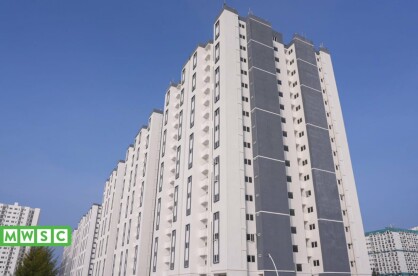The Moody's downgrade
What might it mean moving forward?

What might it mean moving forward?

Since 1909, Moody’s has been a key component in the surveillance of the capital market, with humble beginnings in the American Stock Exchange. The entirety of their work is to conduct market research, unbiased and thorough, and to help investors navigate the market with as much guarantee and awareness as possible. To this end, Moody’s, as well as Fitch, have been rating the credit worthiness of governments and multinational companies alike, and the Maldives is no exception.
Their work is intended to be unbiased and as impartial as possible, with transparency on their rationale for their scoring, and the sources referred to are as critical as well. Yet, what really is this credit score, and why is it of such importance that the Maldivian government took pains to contest this ruling?
A rating is Moody’s opinion of the credit quality of individual obligations or of an issuer’s general creditworthiness. Ratings are not recommendations to buy or sell, nor are they a guarantee that default will not occur. The importance of these ratings are in how the capital market utilises them, and according to Moody’s official website, investors use ratings to help price the credit risk of fixed-income securities they may buy or sell. Many also use ratings as limits on their investment parameters and as means for expanding their investment horizons to markets or security types they do not cover by their own analysis. Since major investors globally rely on Moody’s ratings, the ratings help to provide issuers of debt with stable, flexible access to those sources of capital.
The rating process is simple enough as well. Moody’s gathers information sufficient to evaluate risk to investors who might own or buy a given security, and then develops a conclusion in committee on the appropriate rating. After the committee is done with their discussions, Moody’s then monitors on an ongoing basis to determine whether the rating should be changed, and then informs the marketplace and market participants of Moody’s actions.
The ratings are described as such:
INVESTMENT GRADE
» Aaa – highest rating, representing minimum credit risk
» Aa1, Aa2, Aa3 – high-grade
» A1, A2, A3 – upper-medium grade
» Baa1, Baa2, Baa3 – medium grade
SPECULATIVE GRADE
» Ba1, Ba2, Ba3 – speculative elements
» B1, B2, B3 – subject to high credit risk
» Caa1, Caa2, Caa3 – bonds of poor standing
» Ca – highly speculative, or near default
» C – lowest rating, bonds typically in default, little prospect for recovery of principal or interest
The Maldives had a rating score of B2 in 2016, with a stable outlook, and then changed to B2 with a negative outlook in 2018. A cursory glance at recent history would show that the negative outlook was most likely based on the heavy loan-centric actions of the Yameen Administration, yet the rating then dropped to B3 in May 2020. This meant all this time the Maldives was subject to high credit risk, and the pandemic in 2020 only made matters worse, which is understandable. The COVID-19 brought the local economy to a standstill, and closed borders meant the lifeline that was tourism was beyond reach as well.
However, it is quite curious that the rating further deteriorated to Caa1 a year and three months later, given how tourism had bounced back so very energetically. Tourist arrivals had increased by over 80 percent since 2020, so why would Moody’s be convinced that the Maldives deserved a downgrading to a credit score described as bonds of poor standing?
The Solih Administration reacted as one would expect, by defending the creditworthiness of the country against the lowered score, yet by doing so, this administration is undermining the dependability of a century-old system that entire markets and millions of investors place their trust upon. Regardless, by looking through their report, Moody’s can be seen to have justified their rationale, and the facts that the ruling was based on cannot be denied either.
First and foremost, the increase in commercial borrowing played a large part in weakening the fiscal strength beyond that of Moody’s expectations. The government contends that this was in part due to the pandemic yet how can this reasoning be valid if the rest of the world does not receive the same lowered grading? The pandemic is affecting the whole world, but the rating for the Maldives is that which had dropped immensely.
Maldives' fiscal metrics have deteriorated sharply over the course of the coronavirus pandemic, which resulted in a 32 percent contraction in real economic output in 2020 following the closure of borders to tourism from March to July 2020. Although government revenues were resilient, remaining stable at around 27 percent of GDP in 2020, expenditures expanded to 50 percent of GDP from 33 percent in 2019, driven by coronavirus-related relief and continued investment. As a result, Maldives' debt levels rose to double the median of B3- and Caa1-rated peers at 121 percent of GDP in 2020 from 63 percent in 2019. This is a cause for worry for investors, and this parallel only goes to show that other nations in similar situations fared better than the Maldivian capital market did.
Added to the high dependance on imported goods, the current government’s high fiscal debt driven development projects further exaggerated the speculative nature of the debt ratings. The debt percentage to GDP is only expected to decline gradually due to these practices, and this is one of the reasons cited by Moody’s to downgrade the credit score. Control on debt affordability will hinge on Maldives' continued access to low-cost sources of borrowing, including from bilateral and multilateral lenders as well as local sources including the banking system.
The stable outlook is propped up due to the rebound of the tourism industry mainly, yet the findings indicate that the Maldivian administration has little control over this industry per se. This further pushes down the fiscal strength of the Maldives in terms of paying back loans and investments, and increases doubt in the ability of the Maldives Sukuk Issuance Limited to sustain creditworthiness. Moody’s believes this entity is wholly dependant on the Maldivian government, which is why the ratings reflect the entirety of the Maldives with the downgrading.
In this scenario, it is less likely that Moody’s has overlooked what the Maldivian government in their press release has cited to be the current fundamentals of the Maldivian economy, nor the significant improvements that happened since Moody’s last rated Maldives in May 2020. Their work has been impeccable around the world for decades, and given how the Solih Administration has been deeply mired in debt with neighbouring nations such as India on top of unchecked borrowing to pay off outstanding debts, it is more likely that the rating is accurate and the fault lies on the Maldivian side.
Transparency had been a major part of the manifesto that had brought this administration to power, yet in practice this has much to be desired. The only way to improve the outlook by Moody’s and bring the Maldives back into the capital market as a viable investment opportunity would require a thorough auditing and accountability of the going-ons of the administration, and to generate more local investments and returns. If the outlook does not improve by 2023, it would be a downward spiral that would be hard to get out of, and the detrimental effects could be permanent.



